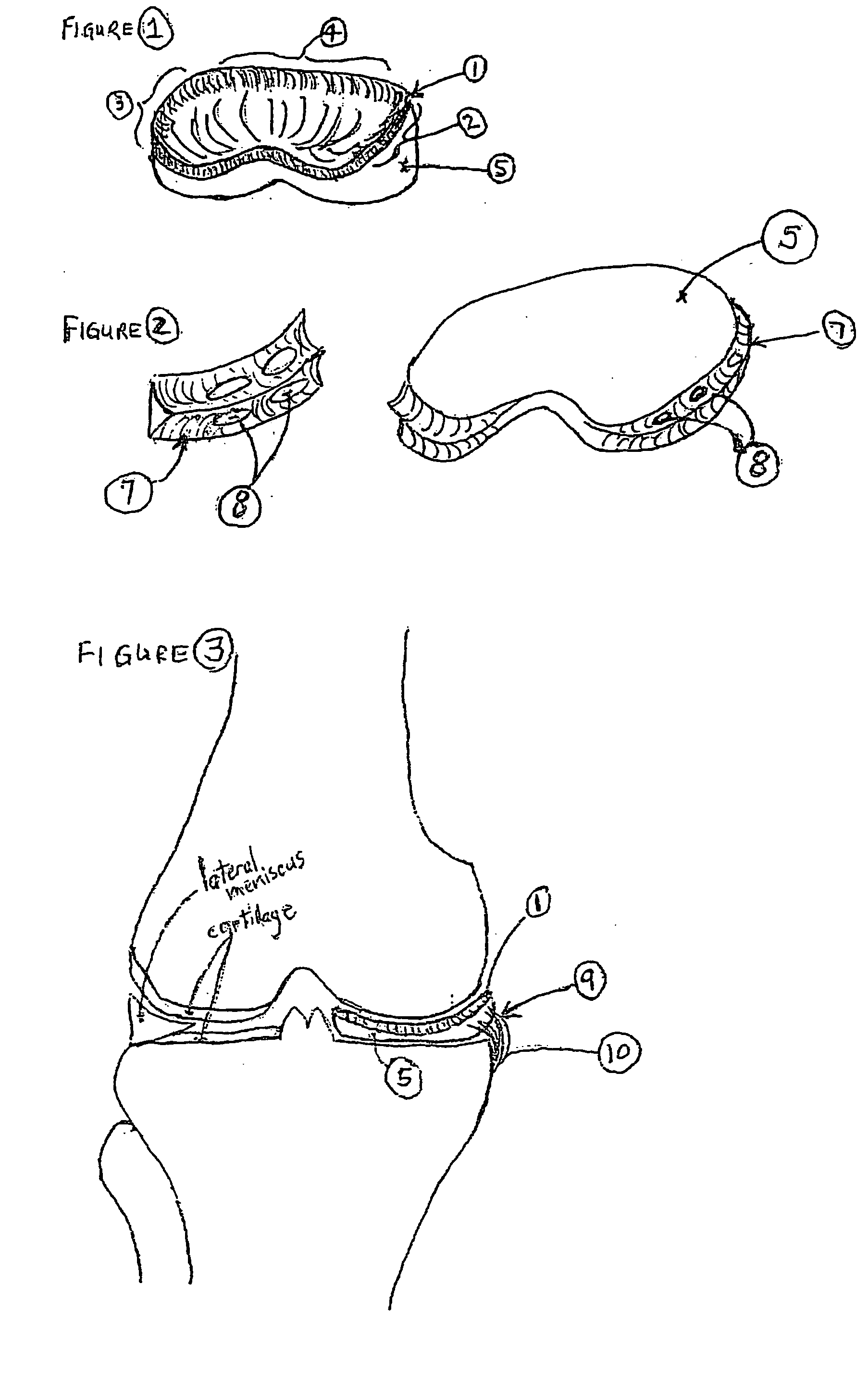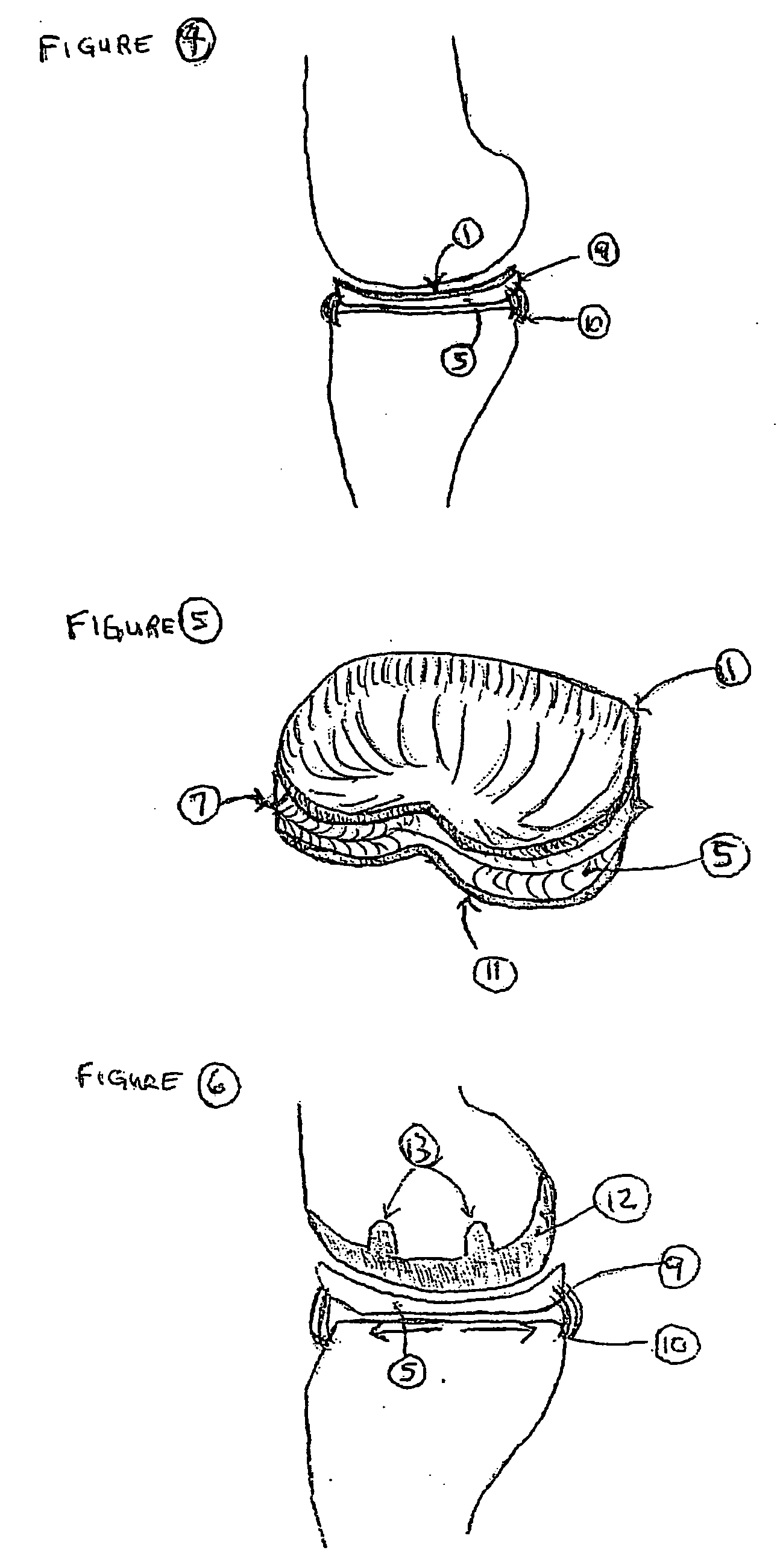Unicondylar knee implant
a technology of unicondylar and knee joint, which is applied in the direction of joint implants, prostheses, ligaments, etc., can solve the problems of chronic inflammation, low cartilage repair capacity, and cartilage breaking down, and achieves low friction, low friction, and minimal incisions
- Summary
- Abstract
- Description
- Claims
- Application Information
AI Technical Summary
Benefits of technology
Problems solved by technology
Method used
Image
Examples
Embodiment Construction
[0111] The invention herein relates to a knee prosthetic implant that overcomes some of the limitations of current TKAs, UKAs, and “spacer” devices, methods of implanting the device, and a kit for implantation of the device. The advantages of the device of the current invention include, by way of illustration only but by no means meant to be a comprehensive list, minimizing surgical procedures, minimizing bone dissection, replacement of meniscal cartilage, mimicry of the function of meniscal cartilage, replacement of hyaline cartilage, mimicry of the function of hyaline cartilage, and usefulness for young, active patients with arthritis of the knees for whom TKAs are relatively contraindicated. It is believed that no other current device is available which accomplishes all of mimicry of both meniscal and hyaline cartilage and function, minimal surgical procedure and minimal or no bone cutting, and the potential for attachment to surrounding soft tissue.
[0112] The device of the curr...
PUM
| Property | Measurement | Unit |
|---|---|---|
| Elastomeric | aaaaa | aaaaa |
| Structure | aaaaa | aaaaa |
| Size | aaaaa | aaaaa |
Abstract
Description
Claims
Application Information
 Login to View More
Login to View More - R&D
- Intellectual Property
- Life Sciences
- Materials
- Tech Scout
- Unparalleled Data Quality
- Higher Quality Content
- 60% Fewer Hallucinations
Browse by: Latest US Patents, China's latest patents, Technical Efficacy Thesaurus, Application Domain, Technology Topic, Popular Technical Reports.
© 2025 PatSnap. All rights reserved.Legal|Privacy policy|Modern Slavery Act Transparency Statement|Sitemap|About US| Contact US: help@patsnap.com



